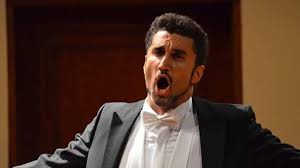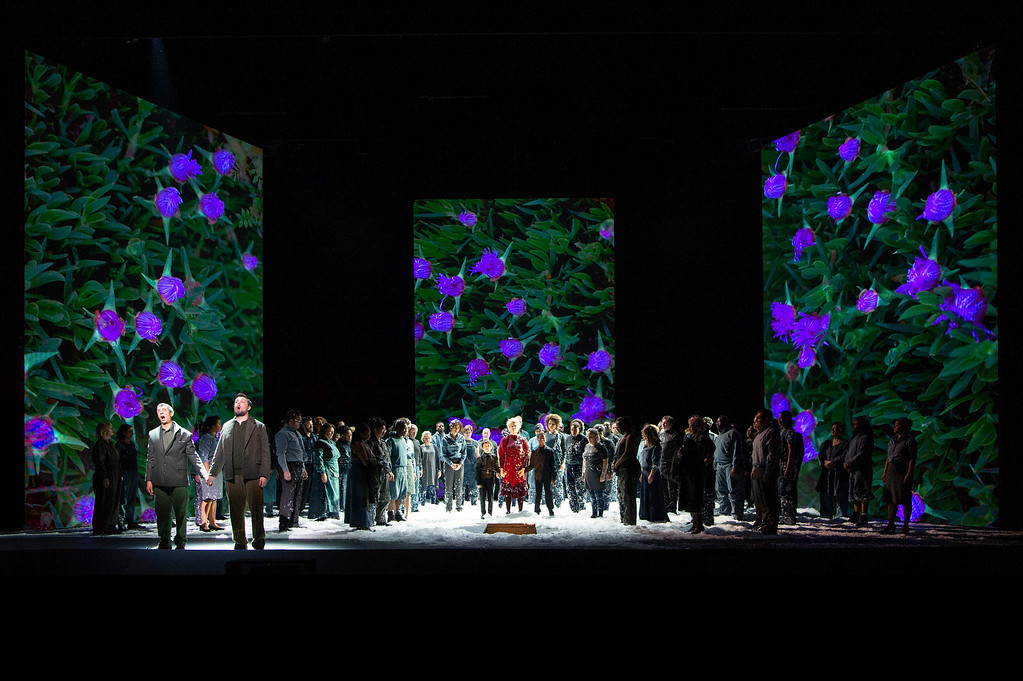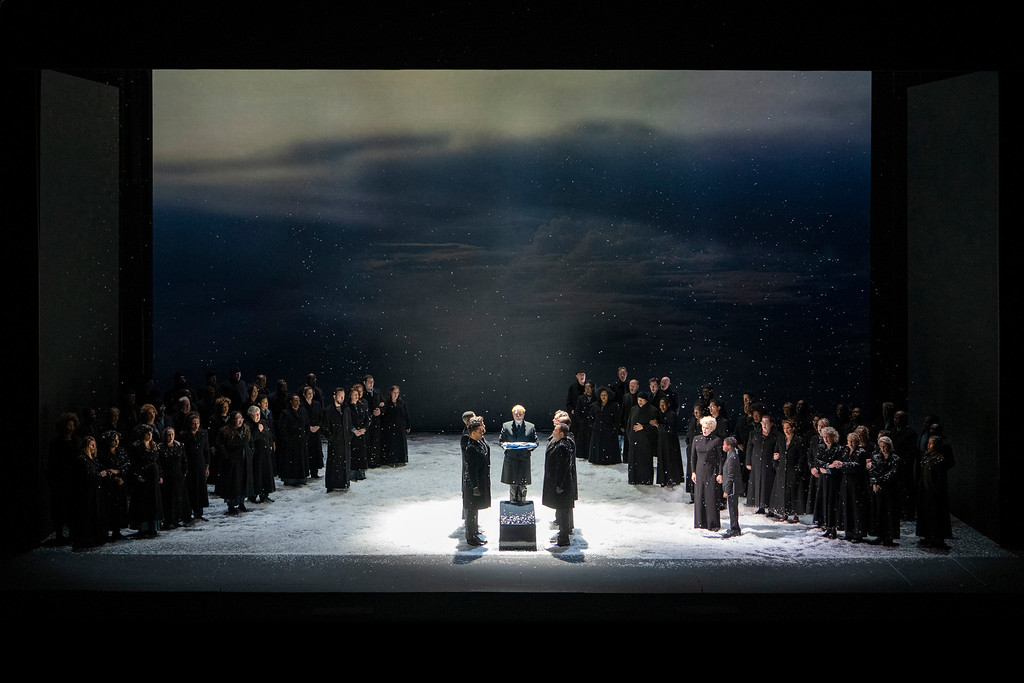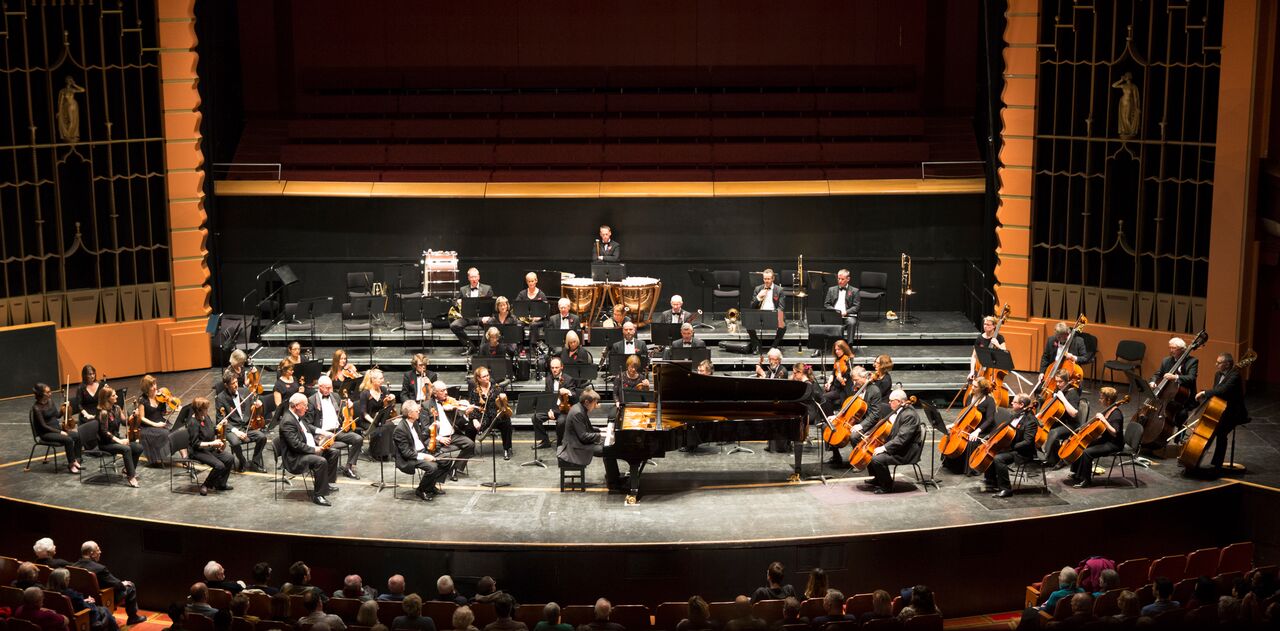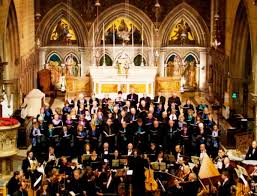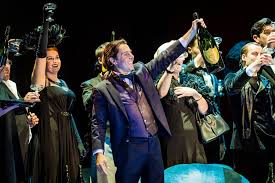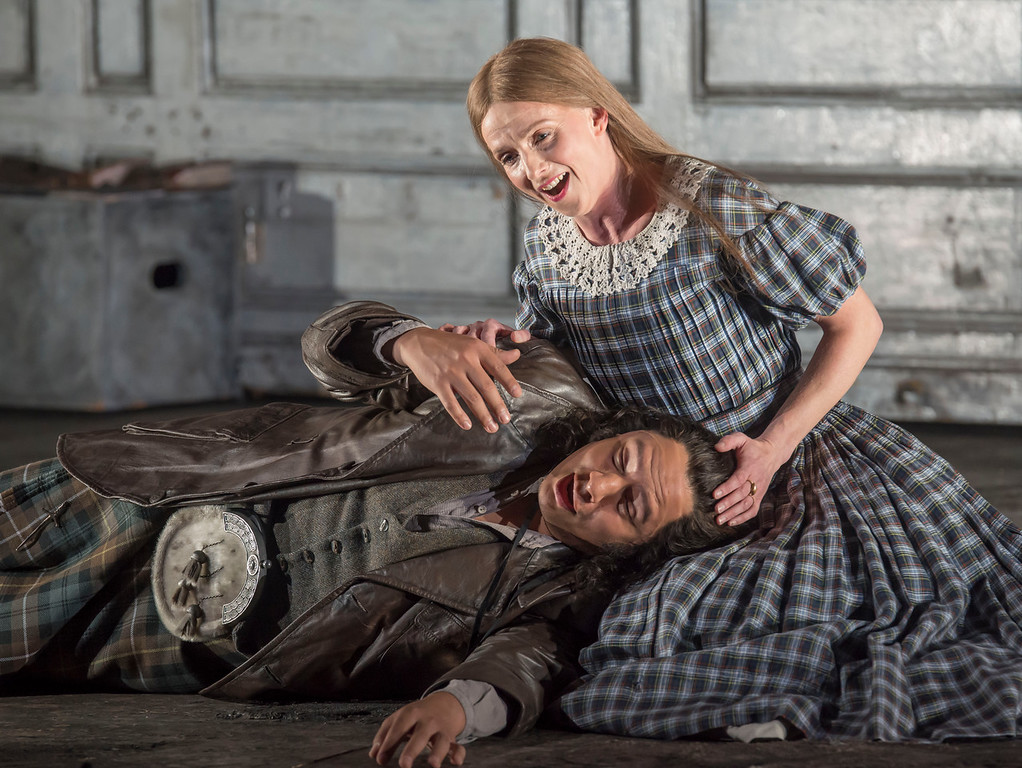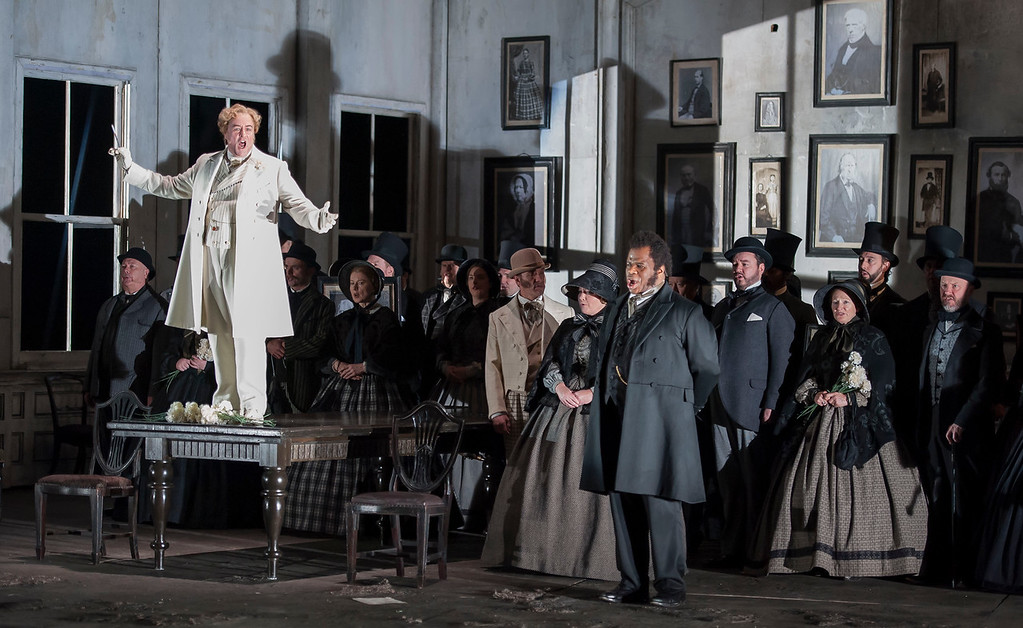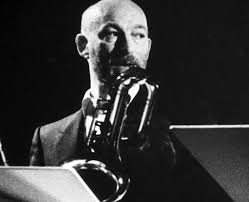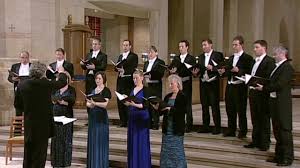John Gibbons does Armistice Day concerts in Remembrance of war dead with the additional insight and respect of a man who is among the thought leaders and drum beaters of British conductors about British music. There is the expected music ‘in memoriam’ which he couples with British works by composers with direct wartime involvement, plus the vital other music that is uplifting and life affirming.
But this concert took the Gibbons Remembrance Concert model to a new sublimation with the inclusion of two powerful solo vocal works. The accustomed outward trappings were Pam Hurcombe’s floral arrangements, the poppies the WSO wore, and four Union Jack and Australian flags hanging above the stage where Gibbons and Helena Dix, artistes Hampshire- and Melbourne-raised, combined their resources in another WSO presentation remarkable for its uncommon and regionally market-leading depth of reach.
Butterworth, Britain’s most famous wartime-fallen composer, was represented by his rhapsody on the poetry of AE Housman, whose A Shropshire Lad is a collection 63 poems reflecting on transient life and love, and early death, whose published versions in waistcoat size were read by British soldiers in the trenches less than 20 years since first publication.
The unashamed sensitivity and affinity with this verse, of Butterworth’s folk-founded, subdued yet potent reflective music, chimes amid Gibbons’ own personal artistic response to the best British music, which probably started from Elgar’s ‘innermost’ onlooker’s utterances and those by Vaughan Williams borne of much closer battlefield experience.
A Shropshire Lad in WSO hands was unfailingly moving to hear and took the ear beyond the worldly staging of Verdi’s opera-house Overture, Force of Destiny, which was the fully-brassed WSO’s opening declaration of consummate power and partnered Tchaikovsky’s Romeo & Juliet Fantasy Overture as ragingly dramatic bookends to the afternoon.
They framed the power and nuance of poetry in a concert of calculated exceptional atmosphere. And his time, Gibbons was throwing down a challenge to various people by playing Irishman Hamilton Harty’s lush, lavish and loving setting of the eight long verses of John Keats’ poem Ode To A Nightingale. First to the music manuscript preservation authorities, second to the conductor himself, third to his audience.
He told me it had taken him four months to prepare. He had to persuade then prise the music from its Irish ‘museum’ stronghold along with permission to perform. This he got, provided he generated his own orchestral parts from the scanned Harty-handwritten, full manuscript score which necessitated his own digital forensic examination to establish full authenticity of all the notes written. He was engineering the work’s own live viability and becoming a world expert on it to boot.
It being for a large orchestra, the difficulty of balancing that force with the sole singer (however powerful, potentially destined to lose) in a concert hall without any recording studio microphones to massage or butter up the situation. Richard Strauss had problems with Four Last Songs, as Worthing audiences found some time ago, similarly with Wagner and Sir John Tomlinson singing Wotan outside the opera house.
In such music, the voice rides roaring or crashing waves of sound with the need for audible words, and the nigh impossibility of that, throughout, given undoctored acoustic circumstances. Gibbons as conductor has to get as close as possible to that in the cleanly responsive and faithful Assembly Hall acoustic, which grants him no screens or veils.
So the audience needed warning (he gave it to them), the words in front of them (they were in the programme, £3), enough light to read them (not forthcoming). What saved the day by compensating for any imperfections was Helena Dix’s immense presence which in this context was a glory. Ode To A Nightingale is often rapturous word-setting with radiant climaxes at the end of verses the soprano delivers and the orchestra crowns.
No matter that Dix sometimes got drenched by waves. She quickly came up again. Fellow Aussie Joan Sutherland – the one to whom Antipodeans compare Dix – would have done likewise. This is the large scale, elemental, visceral, all-embracing experience of the music that I suspect, to give him the benefit of the doubt, Strauss had calculated, too.
Essentially, the voice is another musical instrument, which in the moment can sharpen and dim in focus. As some poets will tell you, sometimes the sound is more important than the word itself. Later in time, rock music often works just as well in the same way, though maybe less fleetingly, when the voice is set back inside the sound of the band.
Ode to a Nightingale is pre-war, premiered in 1907, but here was the life-affirmer of the afternoon. Then, however, Gibbons became even more daring. Dix sang Desdemona’s soliloquy on realising the odds were slimming that she would survive the mounting maelstrom in her husband Othello’s tormented, jealous mind. She recognised death row. “How many trench soldiers would have felt something akin?” was surely Gibbons’ question to the audience.
None of this was operatic scene was comfortable, and we could have derived fullest value had we been given the words in the programme or, better, surtitles. Under Gibbons the WSO brooded and agonised. Dix showed her why she is rising as cover singer for title roles in major opera houses. Her dynamic breadth and bloom of sound which gave her a floral intimacy in Ode to a Nightingale was now a glimmer of waning humanity in desolate realisation and private resignation, alongside Verdi’s penetrating orchestral writing.
The applauding audience wanted her back after the Ode but didn’t get her. They did after Desdemona.
WSO highlights included placing harpist Lizzy Green stage centre instead of wide out on a limb; the linking presence of Olivia Fraser’s cor anglais (English horn) in defining the mood and colour of Desdemona’s plight, then of Tchaikovsky’s Romeo & Juliet love theme; the sinew-tight timpany of Robert Millet in the Tchaikovsky and the sheer thrill of hearing the terrifying trumpets of Tim Hawes and Will O’Sullivan in their moment.
Richard Amey
Some next top music in Worthing –
Sunday, November 18 (4pm) at St Paul’s: Rhythmie Wong’s ‘Dancing Fires and Fragrances’ International Interview Concert in the round with Chinese surprises. Solo piano: ‘La Valse’ (Ravel), ‘The Firebird’ (Stravinsky), ‘Iberia’ Book 1 (Albeniz), ‘The Maiden and The Nightingale’ (Granados), Piano Sonata No 52 in Eb (Haydn), Mystery Music Spot.
https://www.facebook.com/events/265960770677892/
Saturday, December 1 (7.30) at Worthing Assembly Hall: Messiah (Handel). Worthing Choral Society with Sinfonia of Arun, leader Robin Morrish, conductor Aedan Kerney MBE.
https://worthingtheatres.co.uk/show/messiah-worthing-choral-society/
Wednesday, December 19 (8pm) at St Paul’s: ‘Christemas Past with The Telling in candlelight’. International ensemble of two voices, harp and reader with an atmospheric show in original ambience featuring Medieval English and traditional European carols you’ve heard but did not realise how old. With short Q&A, merchandise and gift stalls.
https://www.facebook.com/events/2258765254164741/
Thursday, December 20 (7.30) at All Saints Church, Findon Valley: ‘Richard Durrant’s Candlelit Christmas’ with singer Amy Kakoura and fiddler Nick Pynn. A festive feast of tunes from early music, British folk, traditional carols and original guitar works.
https://www.richarddurrant.com/event/richard-durrant-candlelit-christmas-findon-valley/?tickets_process=#buy-tickets
Sunday, January 6 (2.45pm) at The Assembly Hall: Worthing Symphony Orchestra, ‘Viennese Whirls of Delight’ concert. Overtures – Donna Diana and Poet & Peasant (Reznicek and Suppe). Waltzes – Roses From The South, Blue Danube, Accelerations, Voices of Spring, Gold & Silver (Strauss II and Lehar). Marches – Radetzsky, Tritsch-Tratsch, Thunder & Lightning.
http://www.worthingsymphony.co.uk/upcoming_concerts

